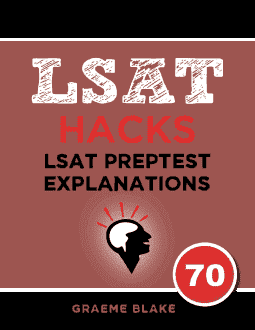DISCUSSION: The key points of Dunham’s work are the following:
- Expertise in research and in dance
- Immersion in the culture she was studying
- Teaching what she learned to dancers in her own culture.
So you want an answer where someone uses their expertise to immerse themselves in a foreign culture and teach what their learned to their own culture.
The key is participation. None of the wrong answers mentions a researcher participating in what they study.
___________
- Dunham actually danced the dances she was studying. This answer should have told us the French archaeologist learned to play the instruments she was researching.
- Same as A. This answer should have said the Australian researcher tried the plants she was researching.
- This answer says the techniques were used in both countries. Dunham studied techniques that weren’t present in her own country.
- CORRECT. Dunham participated in the dances she was studying, and introduced the techniques to America. Here, the teacher actually taught in order to learn the techniques, and he introduced them to Brazil. Everything fits.
- This answer has no participation. The clothing designer should have actually learned to design foreign clothes himself.


WRT (D), Dunham didn’t “introduce the most effective” dance techniques in her own country, or anything similar. She performed traditional dance from other cultures that she mixed with “modern dance styles she learned in Chicago.” Says nothing about the most effective, or best etc. styles. I don’t see how the (D) scenario “fits” with Dunham’s efforts. I would never chose that answer choice…
Remember, we’re looking for the answer choice that is most analogous to Dunham’s work in anthrolopology and choreography. While she did not introduce the “most effective” of a certain set of techniques, she did introduce dance-isolation into North American choreography (lines 1-6), and she combined Carribean dance forms with modern dance styles she learned in Chicago (51-52). Her work thus most closely resembles (D). We don’t need an exact match, just the best of the five choices.
I completely agree with the sentiment here. I immediately crossed out (D) on the basis of “most effective” because nowhere in the passage is there a parallel for that.
It’s an analogy — there doesn’t need to be a one-to-one relationship between the stimulus and every part of the answer choice. The underlying structure of the choice and relevant portion of the stimulus just need to match. The answer choice has two direct similarities with the stimulus:
(1) immersion in another culture
(2) introduction of techniques from that culture to one’s own culture
What do you guys think of this: A person uses their training in X to inform their work in Y.
Dunham uses her training in anthropology to inform her work in choreography.
The Brazilian teacher uses their training in social psychology to inform their work on teaching procedures.
(C) may be tempting with such a prephrase, but is flawed since: (a) it’s collaborative (more than one person); (b) there is no new development (Dunham contributes to an innovation in choreography; the Brazilian teacher innovates teaching procedures in Brazil).
I don’t feel like this is a proper explanation. In answer D, there’s no evidence of learning by participation. The answer only states that he “conducted a detailed study” and “worked with teachers.” So if your explanation is that this answer is correct because the Brazilian learned teaching techniques by teaching, that would be false. He did teach it eventually, when he came back to Brazil, but that’s not the same as researching via participation, which is your point. You make a big assumption here by saying that the Brazilian must have taught since he worked with teachers, yet you don’t make the same assumption that in answer A the Frenchwoman must have played the instruments while researching them. I don’t see how you can use participation as the only qualifier given the lack of information given in the answer choices.
The only real qualifier that works, in my opinion, is to find the answer where the person brought what they learned abroad back to their own country and incorporated it specifically into their home culture. D is the only answer that meets that criteria. You could make a case for B, but then you can cross B out on the grounds that the medical researcher didn’t introduce the new medicines, some other company did, whereas in D the same person that learned the techniques brought them back. Thus D is the strongest answer of the five (albeit not a perfect analogy since we don’t know if he actually taught in Asia).
A teacher did a study “while working with teachers”. I admit it’s not 100% certain they actually taught, but how else would a teacher work with teachers? It’s pretty bloody probable.
Meanwhile, in A, the archaeologist has training in “musicology”. From Oxford: the study of music as an academic subject, as distinct from training in performance or composition; scholarly research into music.
So it’s a massive stretch to assume the archaeologist/musicologist was playing rare, 17th century instruments. And it’s incredibly likely the teacher in D taught.
But that wasn’t the only criterion. I listed three in the main section of the explanation, and in D I pointed out that they worked and they brought the techniques to their home country. I didn’t point out they were immersed in another culture, but this was implied since they worked abroad.